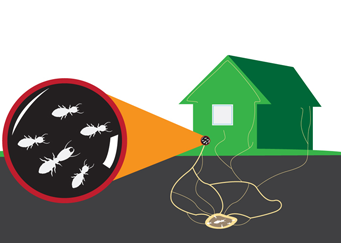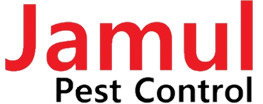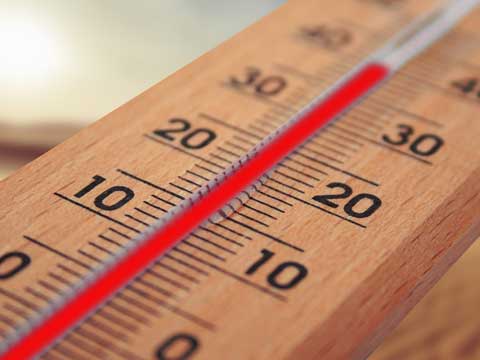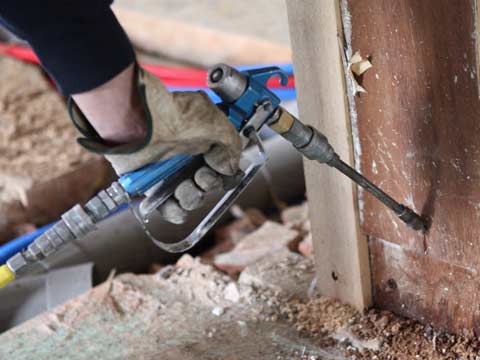What Are Formosan Termites
Formosan subterranean termites are small white insects which feed on wood. These termites are closely related to the more commonly known Eastern subterranean termite and require similarly moist conditions to survive. Formosan termites construct under ground nests called crown colonies where they infest structures from a distance. Colonies tend to be larger because Formosan termite queens produce offspring faster than any other termite species. As the crown colony grows, the crown colony acts as central hub that feed smaller satellite colonies in the space between infested structures and the primary crown colony. Formosan termites are unique in that they can create satellite colonies within the structure, commonly building satellite colonies on the second floor of a structure. They are able to do this because Formosan termites line their nests with feces to keep the moisture in, whereas their cousins, the Eastern subterranean termite do not. With our warm and sunny climate, Formosan termite infestations can happen any time throughout the year. Formosan termites usually swarm in spring when the ground warms or after rain. Protective mud tubes are the primary source of above ground transportation between the colony and the infested timber. It is common to find evidence of Formosan termites in basements, baseboards or any wood framing buried in soil.


Formosan Termite Damage
Of the 2,000 known species of termite, Formosan termites are the most voracious, aggressive, and devious species of them all. Formosan termites threaten the foundation of a structure by undermining the soil and buried wood. If a Formosan termite infestation is ignored, the safety of your home or property may be compromised. Untreated infestations can cost thousands of dollars in damage and almost always require extensive repairs to be made to the concrete slab or foundation of the structure. Formosan termites will also enter a home through cracks in the cement slab or joints of the structure. After entering the home, Formosan termites typically end up in suitably moist locations such as bathrooms or showers.
Signs of a Formosan Termite Infestation
Formosan termites infest structures by drilling mud tubes through the soil to access submerged wood beams and foundations. Mud tube systems are built to tunnel towards the submerged or low to the groun parts of a structure. They will then use the structure as a source of food and to set up satellite colonies, sometimes within the home.
Termite damage is caused from the inside out. Termites hollow out wood, causing damage that is not immediately visible on the outside. If you think you have termites, try tapping the area and listening for a hollow sound. You may also notice damage such as blistering or peeling around the affected area. Termite damage sometimes appears as crack-like lines on your wall, foundation, beams, etc. Those are actually tunnels that the termite colony has eaten through. Pieces of wood or structural beams with smooth tunnels inside them is a sure sign of termite infestation. Formosan termite damage can threaten the safety of a structure by weakening support beams and foundations. They require immediate intervention to prevent structural failure.
Only a state licensed termite inspector can determine if your property has Formosan termites, but it’s time to call us if you see the following signs:
- Mud tubes
- Wood shaving piles
- Termite droppings / frass
- Moist / wet ground space near the base of the structure






